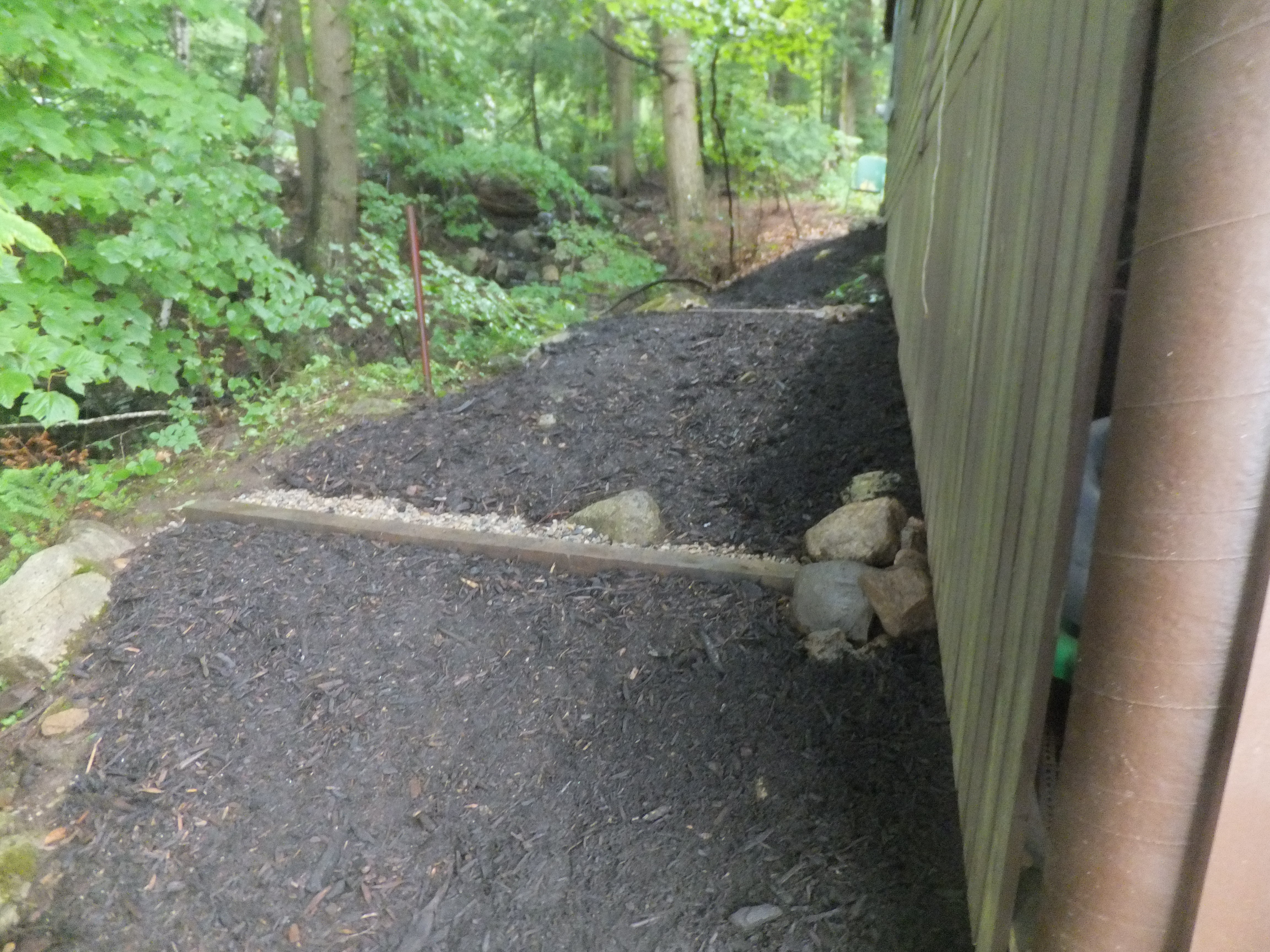Water Bar

Definition
A ridge or ridge and channel constructed diagonally across a sloping road or utility right-of-way that is subject to erosion. Used to prevent erosion on long, sloping right-of-way routes by diverting runoff at selected intervals.
Where Practice Applies
- Where runoff protection is needed to prevent erosion on sloping access right of-ways.
- On sloping areas generally less than 100 feet in width.
Disadvantages/Problems
Need maintenance periodically for vehicle wear.
Planning Considerations
- Narrow rights-of-way on long slopes used by vehicles can be subject to severe erosion. Surface disturbance and tire compaction promote gully formation by increasing the concentration and velocity of runoff.
- Water bars are constructed by forming a ridge or ridge and channel diagonally across the sloping right-of-way. Each outlet should be stable, and should be able to handle the cumulative effect of upslope diversion outlets. The height and side slopes of the ridge and channel are designed to divert water and to allow vehicles to cross.
Design Recommendations
- Height: 18 inches minimum from channel bottom to top of settled ridge.
- Side slopes: 2:1 or flatter (3:1 or flatter where vehicles cross).
- Spacing: For right-of-way widths less than 100 feet; spacing as follows:
| Slope (%) | Diversion Spacing (feet) |
| < 5 | 125 |
| 5 to 10 | 100 |
| 10 to 20 | 75 |
| 20 to 35 | 50 |
| >35 | 25 |
- Base width of ridge: 6 feet minimum.
- Grade: Constant or slightly increasing, not to exceed 2%.
- Outlet: Diversion must cross the full access width and extend to a stable outlet.
Installation
- Construct the diversion system as soon as the access right-of-way has been cleared and graded. Locate first diversion at required distance from the slope crest depending on steepness of right-of-way slope. Set crossing angle to keep positive grade less than 2% (approximately 60-degree angle preferred).
- Mark location and width of ridge and disk the entire length. Fill and compact ridge above design height and compact with wheeled equipment to the design cross section.
- Construct diversions on constant or slightly increasing grade not to exceed 2%. Avoid reverse grades.
- Set direction of water bars to utilize the most stable outlet locations. If necessary, adjust length of waterbars or make small adjustments to spacing.
- Do not allow runoff from upslope water bars to converge with downslope water bar outlets.
- Construct sediment traps or outlet stabilization structures as needed. Seed and mulch the ridge and channel immediately.
Common Trouble Points
- Overtopping ridge where diversion crosses low areas: Build water bars to grade at all points
- Erosion between water bars: Spacing too wide for slope. Install additional water bars.
- Ridge worn down: Channel filled where vehicles cross; surface not stable; or side slopes too steep: may need gravel.
- Erosion at outlets: Install outlet stabilization structure or extend upslope water bar so runoff will not converge on lower outlets.
- Erosion in channel: Grade too steep. Realign water bar.
Maintenance
- Inspect water bars periodically for vehicle wear. Inspect for erosion and sediment deposition after heavy rains.
- Remove debris and sediment from diversion channel and sediment traps, repair ridge to positive grade and cross section. Add gravel at crossing areas and stabilize outlets as needed.
- Repair and stabilize water bars immediately if right-of-way is disturbed by installation of additional utilities.
- In removing temporary water bars, grade ridge and channel to blend with natural ground. Compact channel fill and stabilize disturbed areas with vegetation. Water bars should not be removed until all disturbed areas draining to them have been stabilized, inspected, and approved.
- If water bars are designed for permanent use, correct any erosion problems, stabilize outlets, and apply permanent seeding.
References
Massachusetts Department of Environmental Protection, Office of Watershed Management, Nonpoint Source Program, Massachusetts Nonpoint Source Management Manual, Boston, Massachusetts, June, 1993.
North Carolina Department of Environment, Health, and Natural Resources, Erosion and Sediment Control Field Manual, Raleigh, NC, February 1991.